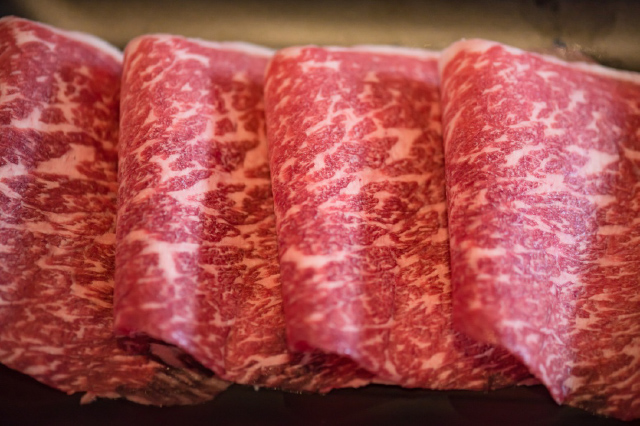
The Science of Wagyu
Wagyu beef is not weird science. It’s an ingenious string of genetics and well-blended nutrients that define the intense marbling and moisture that runs throughout the muscle of the meat while creating one of the best mouth-watering experiences that a palette can have.
Wagyu cattle beef did not come about because of weird science. Rather it’s due to a unique blend of circumstances which existed in their native Japan. The Japanese Wagyu herd was almost totally isolated from outside influence for several hundred years. In addition, the breed was utilized as draft animals, pack animals and to produce milk.
Happily, over many hundred years, the breeding of Wagyu cattle for these purposes has created a unique mix of genetics. Amongst other things it has favored the laying down of intramuscular fat or marbling as we know it. The exact reason for this is not fully understood but the composition and low melting point of the fat is beneficial health wise as well as giving a mouthwatering taste!!
Wagyu cattle raised in New Zealand differ in many respects from those other countries. Whilst most overseas Wagyu are born on farms of one sort or another almost all end up being fed on a high grain diet and finished on a feedlot. By contrast, our NZ Wagyu are born and raised on our farms and eat a diet of green grass throughout their lifetimes.
Our country has a unique blend of fertile soils, plentiful rainfall, ample sunshine, and temperate climate giving us lots of healthy green grass. This allows our cattle to be bred raised and finished on grass with only minimal feed supplements. Feeding cattle on pasture avoids any of the possible negative effects of grain feeding and intensive feed-lotting.
New Zealand grass-fed Wagyu is a fuller flavored meat but retains all the prized Wagyu eating characteristics of great marbling, color, flavor, and texture.
The grading system of the Wagyu in New Zealand is based on the standards of the Meat Standards Australia (MSATM) Beef Grading Program predicts Eating Quality by grade, cooking technique and aging process to assure the softness of beef for consumers. The MSA grade/s are determined by computing direct and reciprocal factors that determine beef eating caliber. Such factors include growth history, marbling, breed, age, sex, carcass quality attributes, processing routines, and care. Please review the MSA for more information.
Looking further, the marbling of Wagyu beef has been increased in Japan to meet domestic consumer desires. Wagyu cattle have high possibilities of accumulating intramuscular fat (IMF) and producing highly marbled beef. The IMF content is diverse depending on the feeding of time, finishing diet, and breed type. IMF increases when feeding time is increased. The rate of IMF increase in grain-fed cattle is faster than that in pasture-fed cattle. The fatty acid composition also varies depending on breeds. Highly marbled Wagyu beef have higher proportions of monounsaturated fatty acid (MUFA) due to higher concentrations of oleic acid. MUFAs have little effect on total cholesterol. They are heart-healthy dietary fat because they can lower low-density lipoprotein (LDL)-cholesterol while increasing high-density lipoprotein (HDL)-cholesterol.
Japanese Black cattle have unique physiological properties and specific dynamics of crucial intramuscular genetic expression. However, there are still unknown reasons for why Japanese Black cattle can produce highly marbled beef.
Review Additional Resources
New Zealand – Ministry for Primary Ministries, New Zealand
Japan – Wagyu and the factors contributing to its beef quality: A Japanese industry overview
Australia – MLA – Meat Standards Australia
